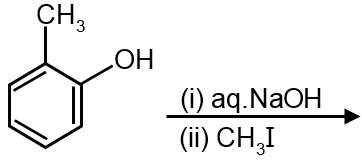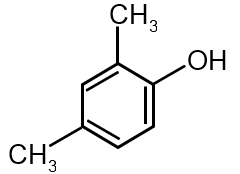The major product of the following reaction. :


The given reaction involves a conjugated diene (1,3-butadiene derivative) undergoing electrophilic addition with HBr. This follows the mechanism of 1,2-addition and 1,4-addition due to resonance stabilization of the allylic carbocation intermediate.
Step 1: Protonation of the diene by HBr to form a resonance-stabilized allylic carbocation.
The electrophile (H⁺) adds to the terminal carbon, generating a carbocation that is resonance stabilized:
Step 2: Nucleophilic attack by Br⁻ on the carbocation.
At low temperatures (kinetic control), 1,2-addition dominates, giving the less stable but faster-formed product. At higher temperatures (thermodynamic control), 1,4-addition dominates, giving the more stable alkene.
For this reaction (likely under kinetic control), the major product is from 1,2-addition:
Final Answer: The major product is 3-bromo-1-butene, which corresponds to the second option:

Resonance Energy: Allylic carbocations are stabilized by resonance, lowering the energy of the intermediate and influencing product distribution.
Markovnikov's Rule: In electrophilic addition, the electrophile adds to the less substituted carbon of the alkene, forming the more stable carbocation.
1,2 vs 1,4-Addition: